Abstract
Progress in the development of schistosomiasis models for use in control programmes is limited by the considerable uncertainty in many of the biological parameters. In this paper, this problem is addressed by a comprehensive sensitivity analysis of a schistosomiasis model using the Latin Hypercube method. Fifty simulations with different parameter contributions are run for 50 years with treatment during the first 20 years and reinfection thereafter. The analysis shows only a relatively small divergence between simulations during the chemotherapy treatment programme but considerable divergence in reinfection levels after treatment is stopped. A skewed distribution of outcomes was seen with most simulations showing effective control and a few where control had less impact. The most important uncertainty source was due to the unknown levels of acquired immunity and also uncertainty in the true worm burden. In particular, the strength of the immune response was most important in determining whether control was effective with higher immunity leading to less effective control. Among those simulations in which control was not very effective, those in which the mean worm burden was high showed the least effective control. Since both these are areas of genuine uncertainty, it is proposed that uncertainty analysis should be an integral part of any projection of control programmes.
Full text
PDF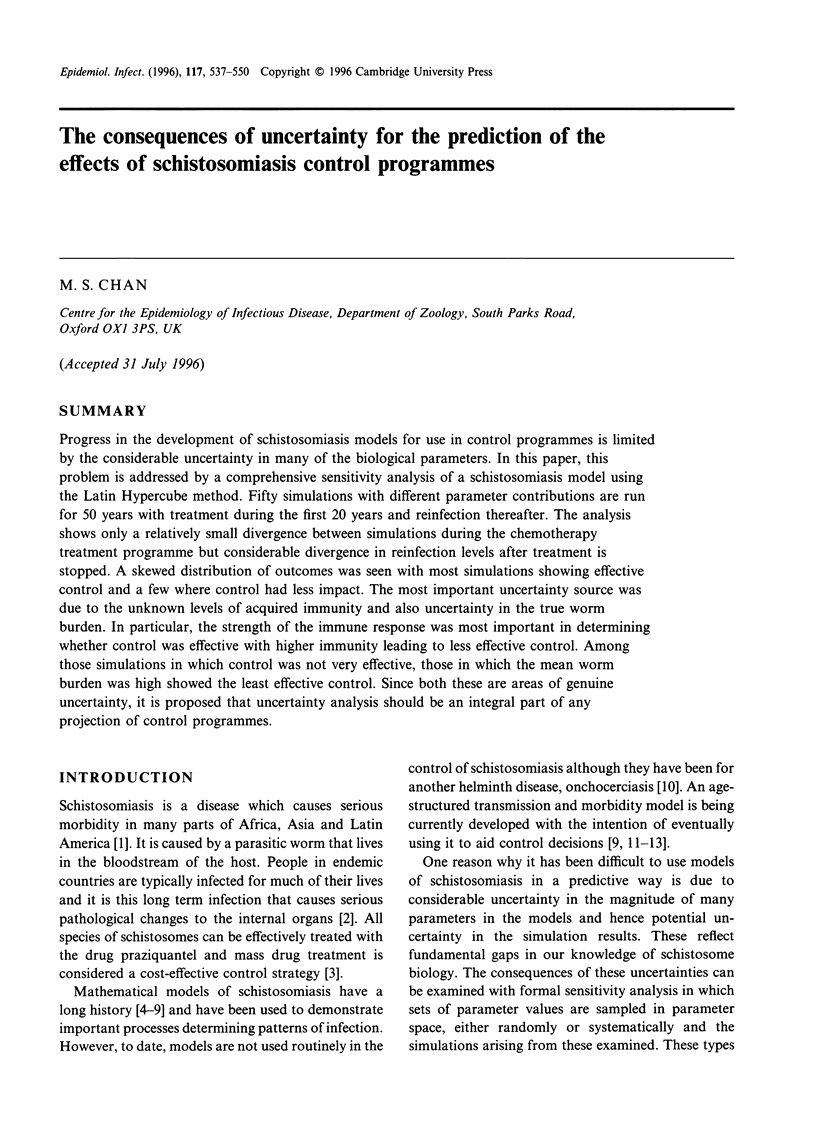
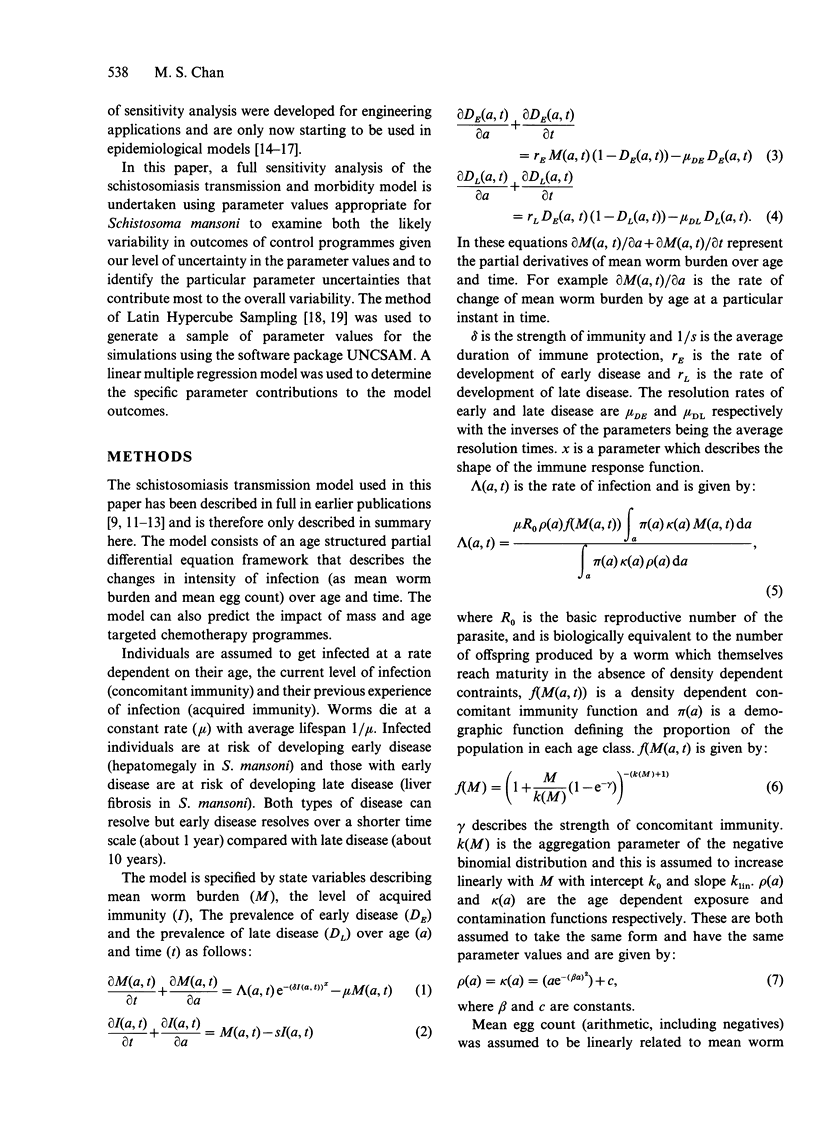

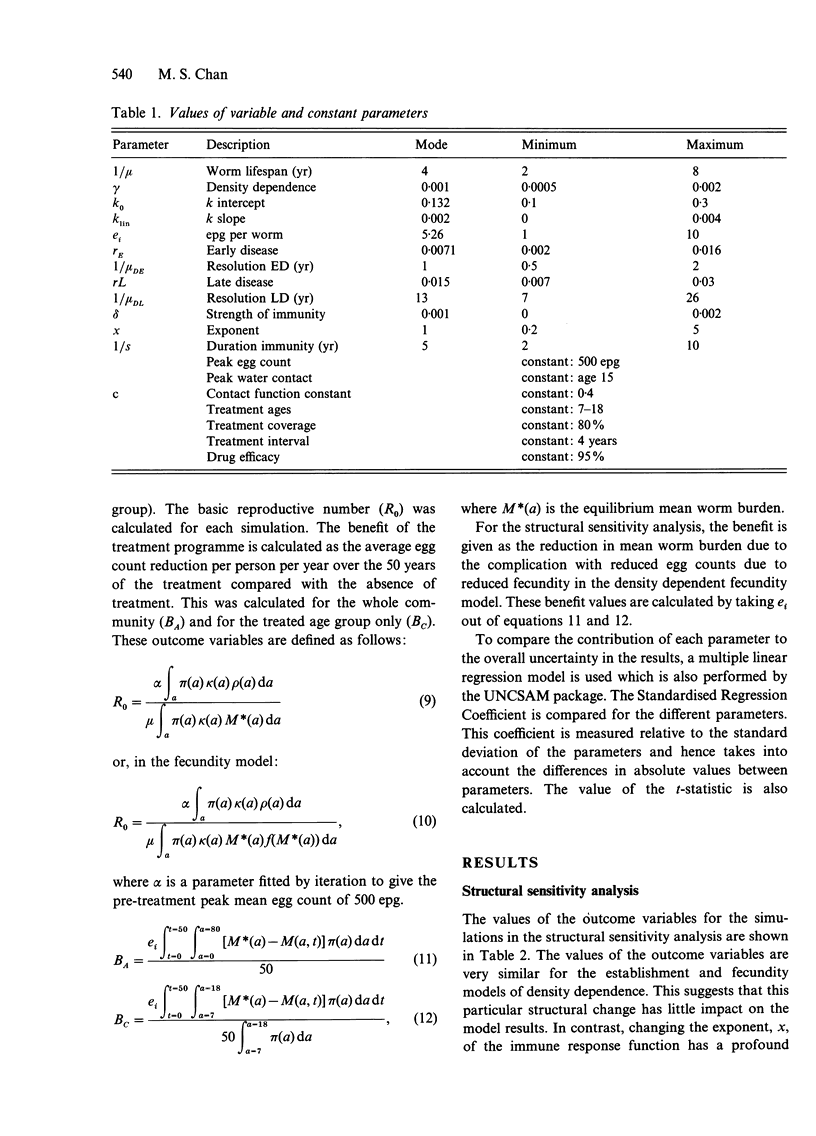
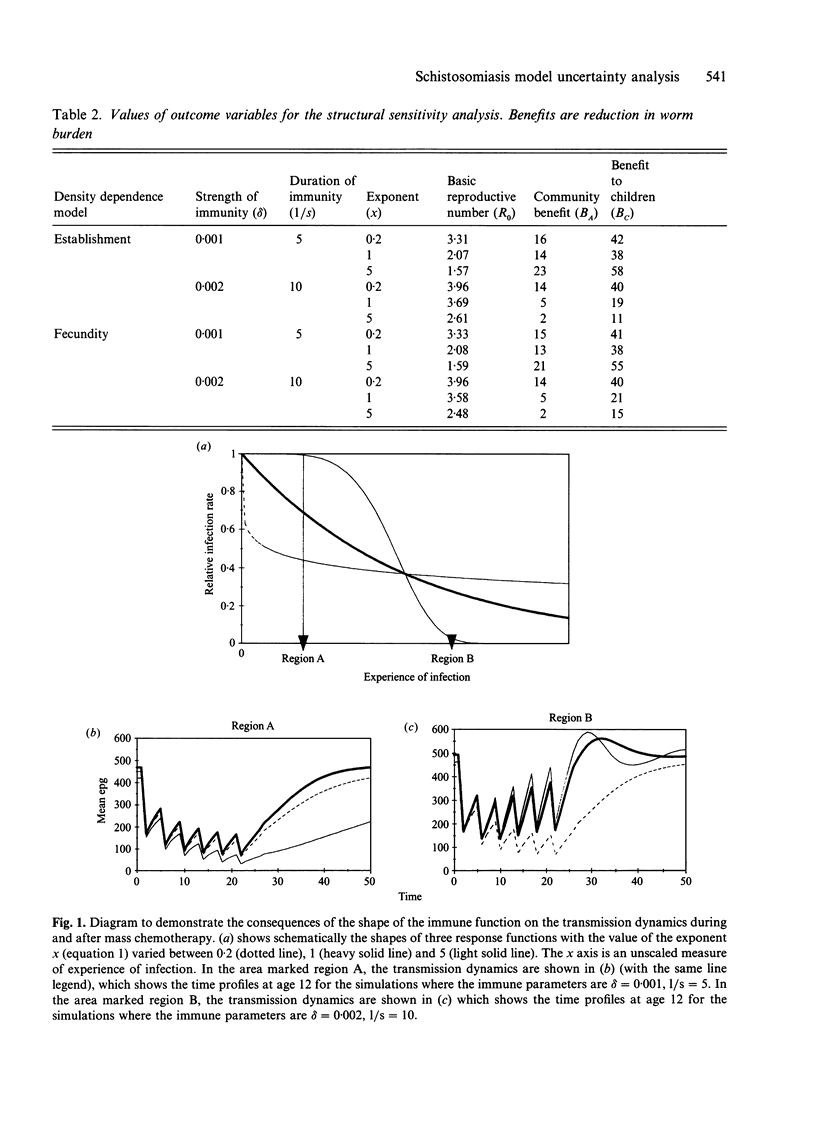
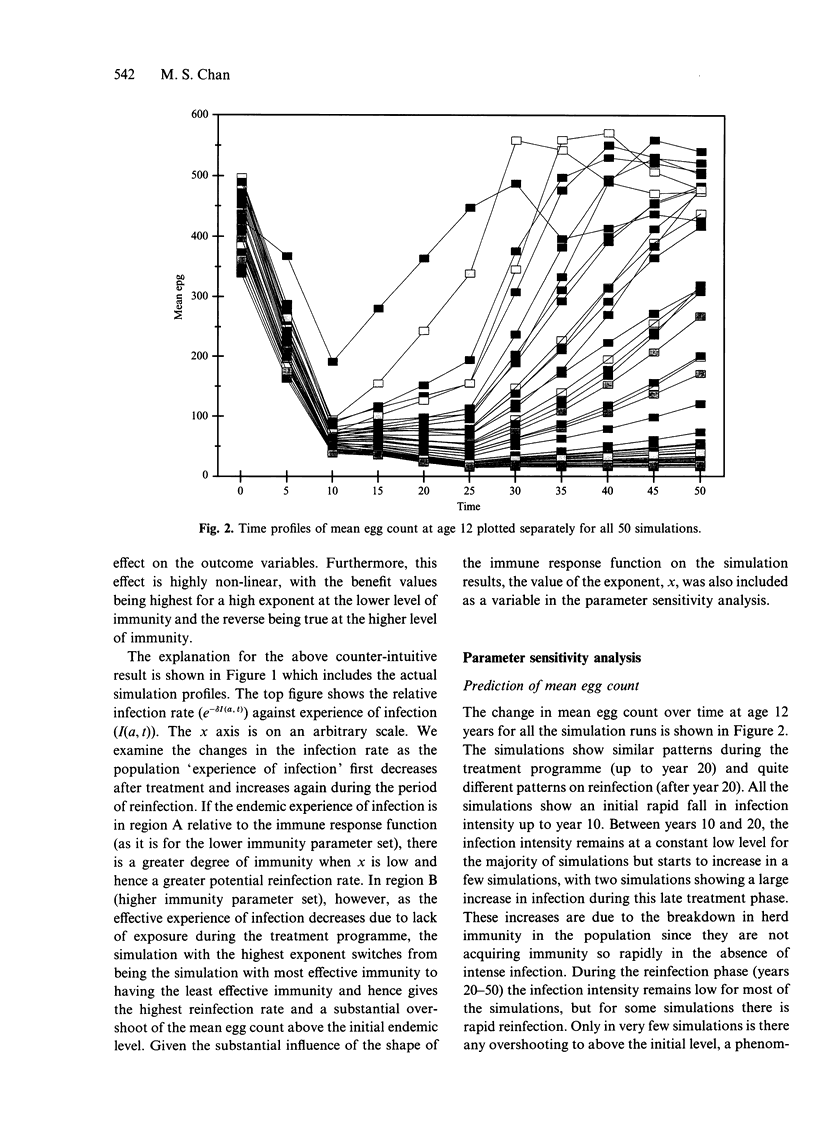
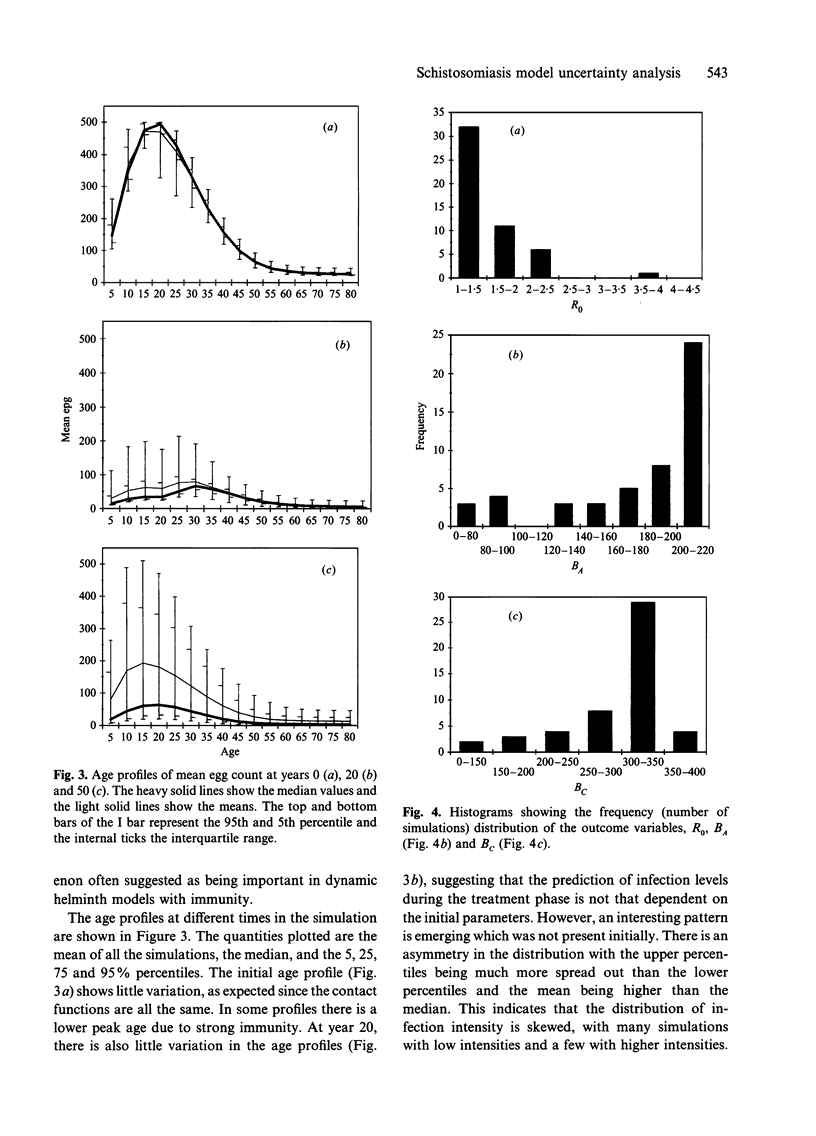
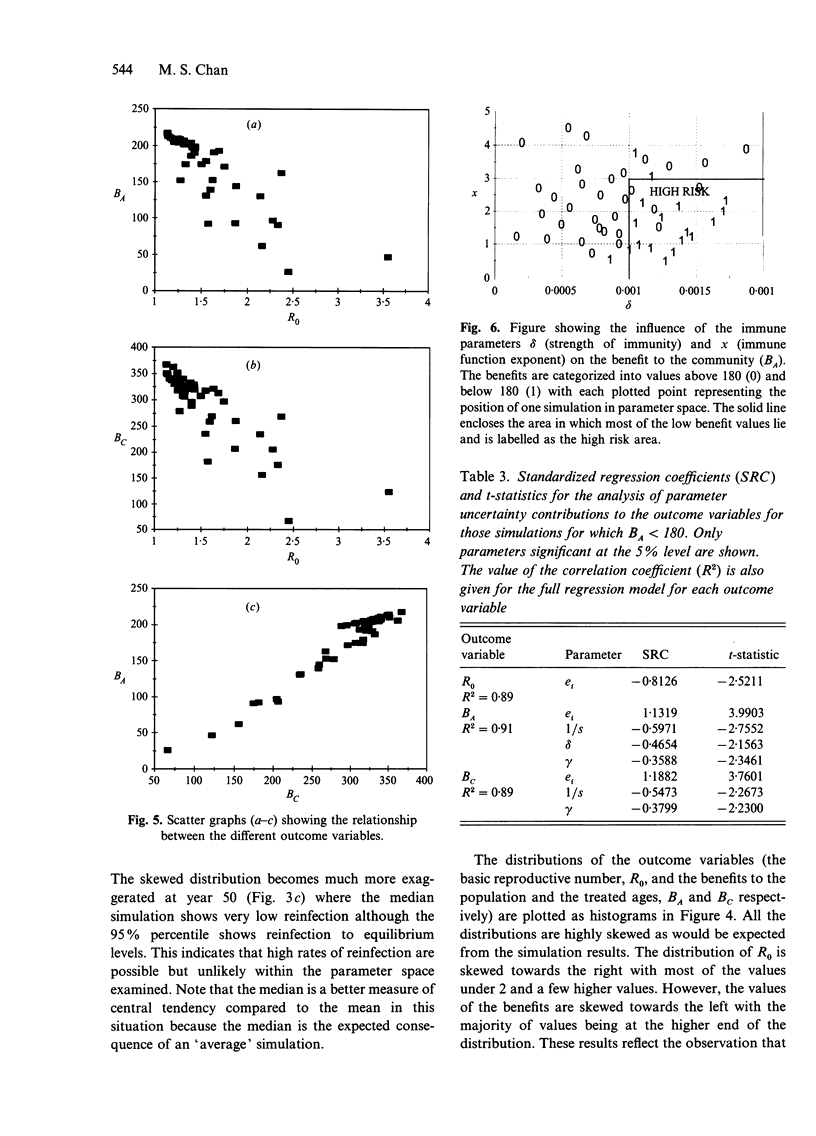
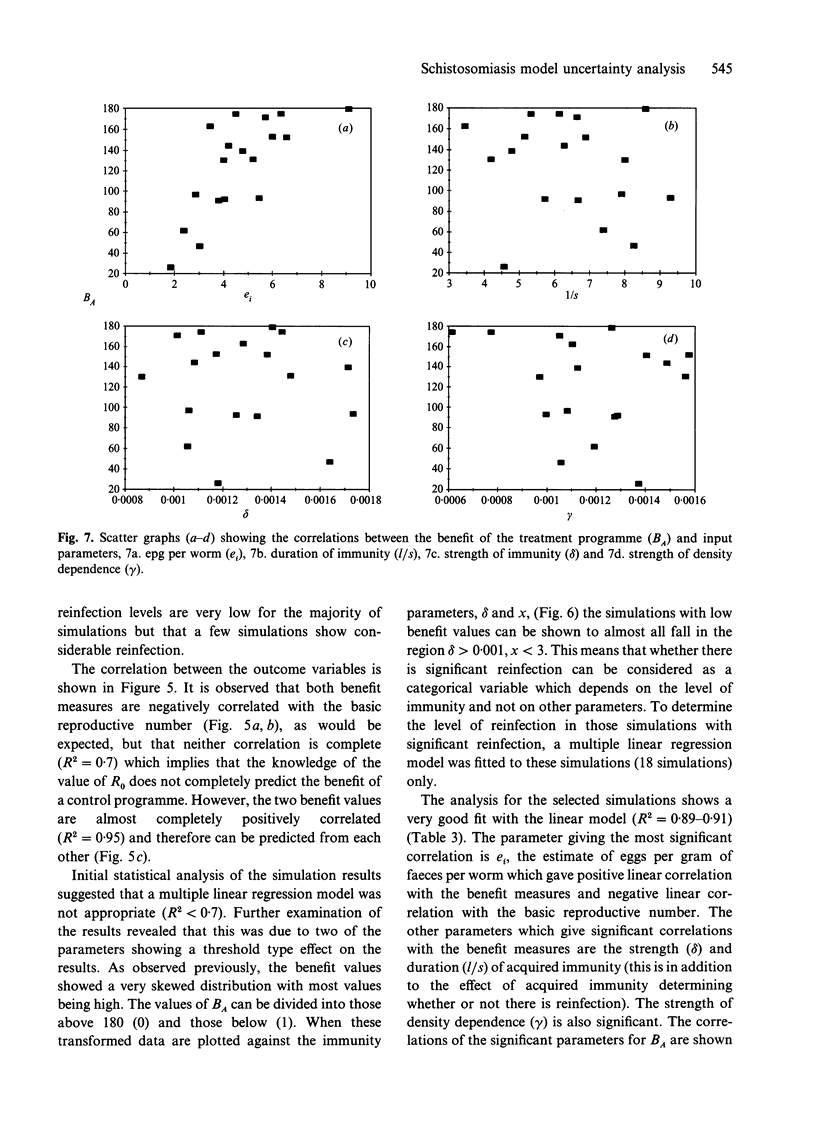
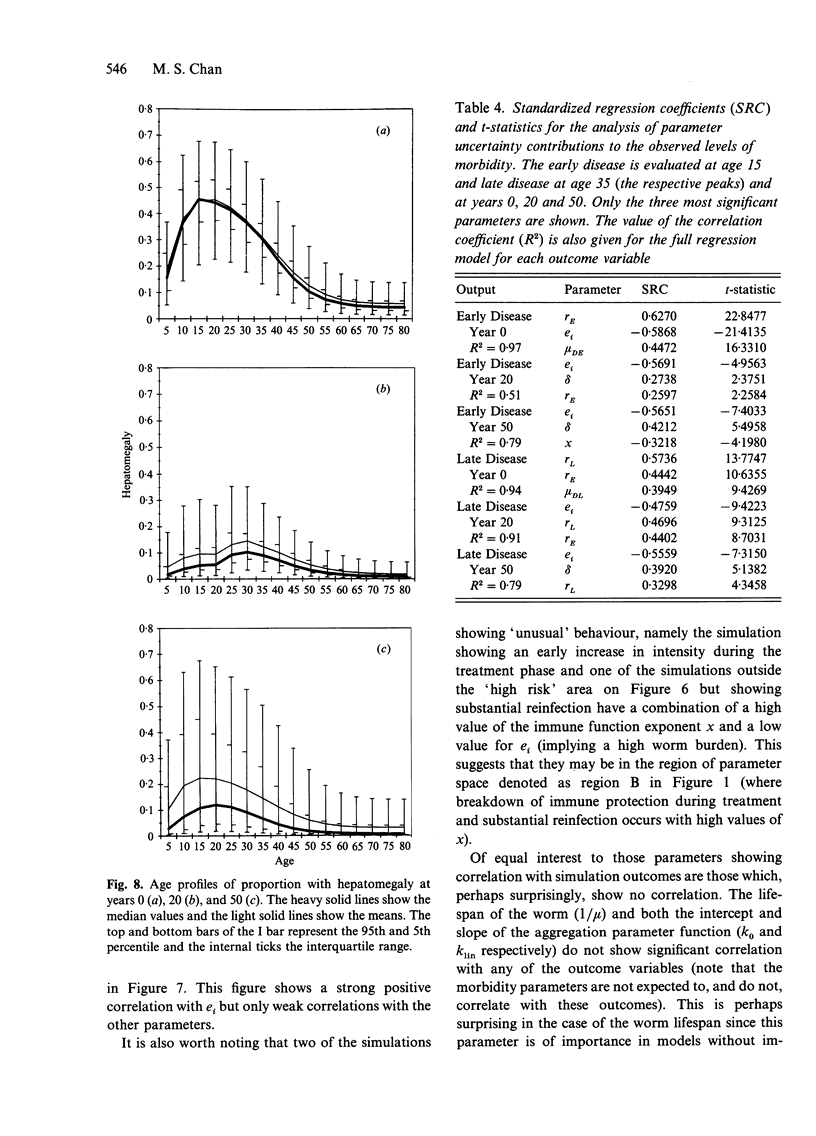

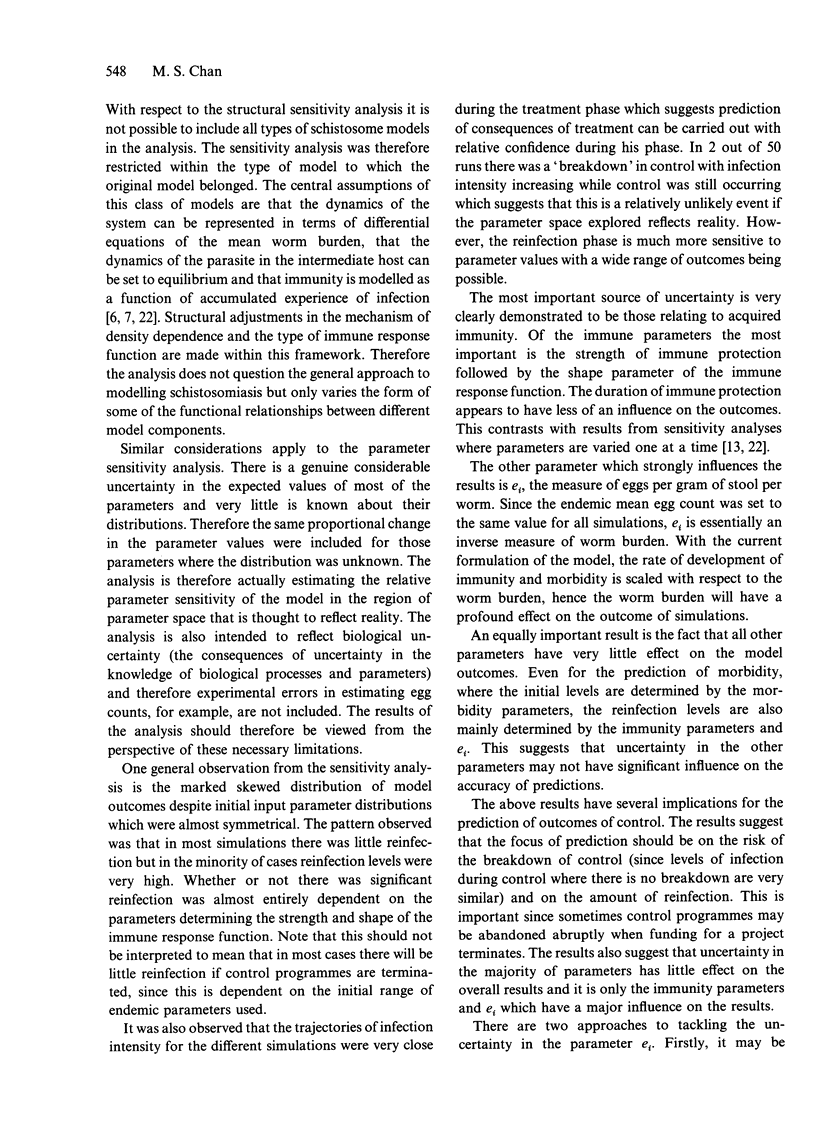
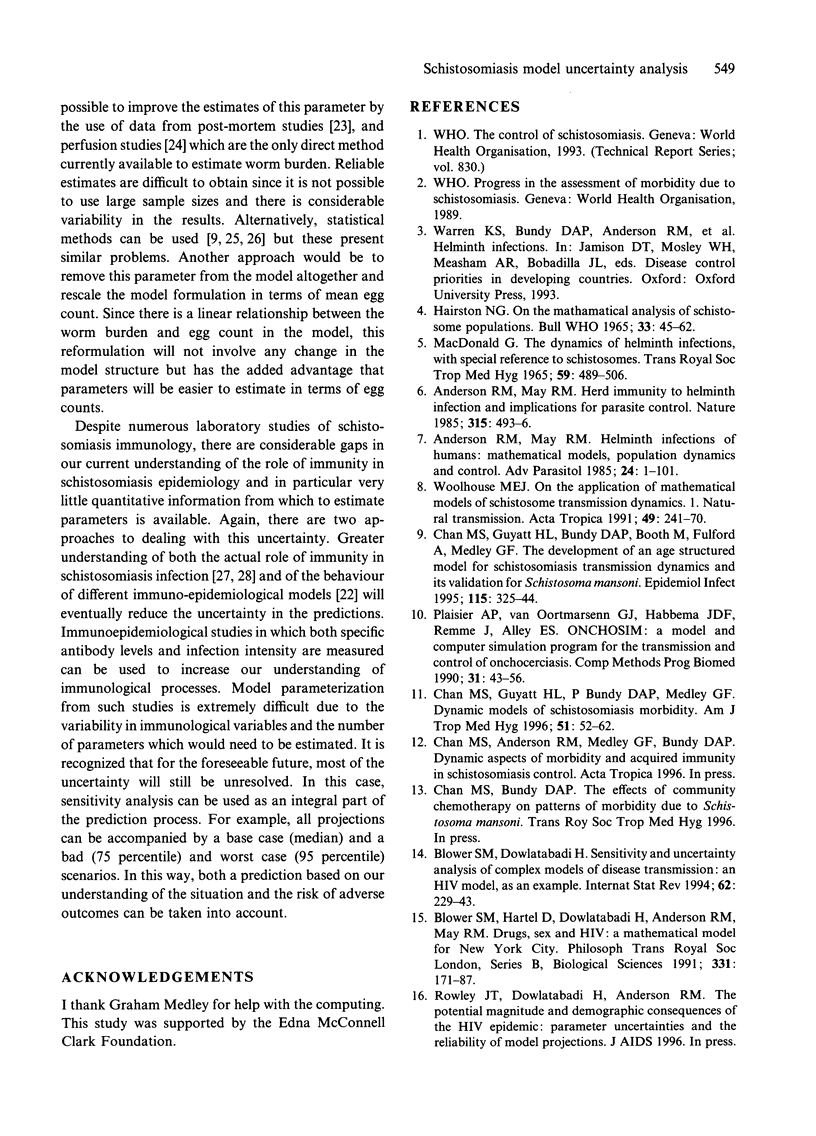
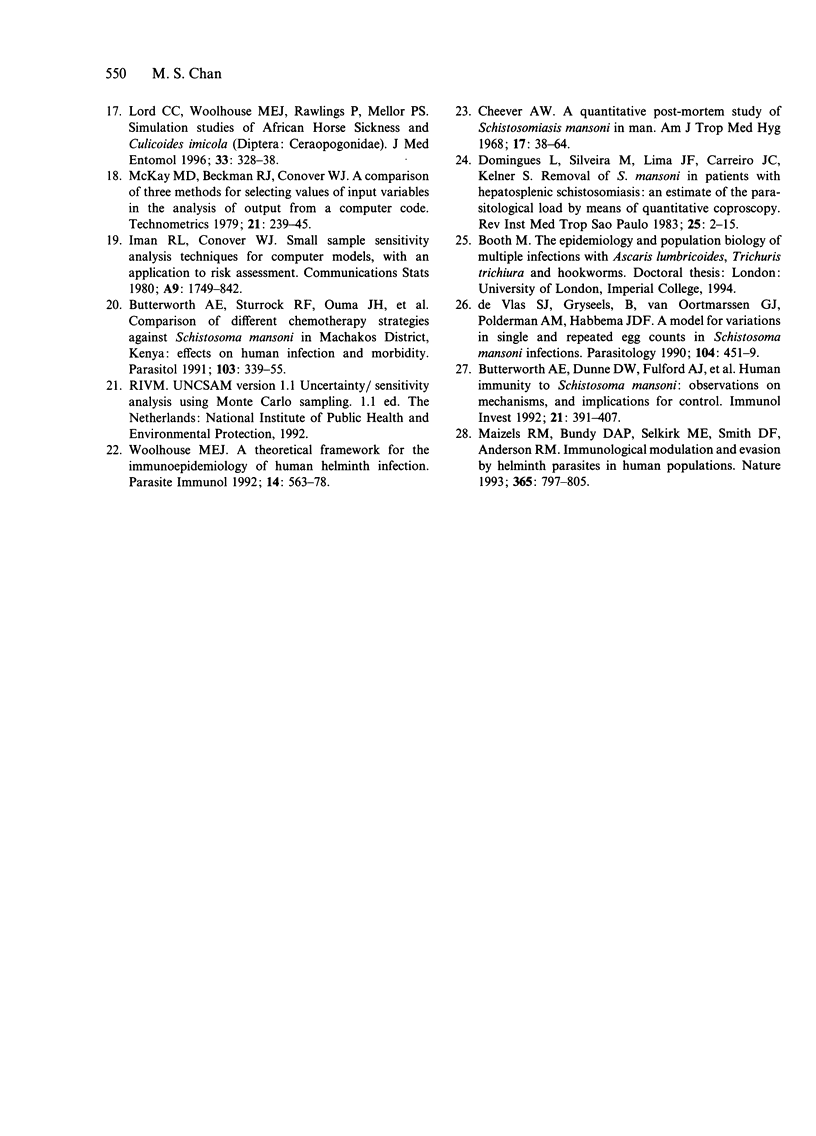
Selected References
These references are in PubMed. This may not be the complete list of references from this article.
- Anderson R. M., May R. M. Helminth infections of humans: mathematical models, population dynamics, and control. Adv Parasitol. 1985;24:1–101. doi: 10.1016/s0065-308x(08)60561-8. [DOI] [PubMed] [Google Scholar]
- Anderson R. M., May R. M. Herd immunity to helminth infection and implications for parasite control. Nature. 1985 Jun 6;315(6019):493–496. doi: 10.1038/315493a0. [DOI] [PubMed] [Google Scholar]
- Blower S. M., Hartel D., Dowlatabadi H., Anderson R. M., May R. M. Drugs, sex and HIV: a mathematical model for New York City. Philos Trans R Soc Lond B Biol Sci. 1991 Feb 28;331(1260):171–187. doi: 10.1098/rstb.1991.0006. [DOI] [PubMed] [Google Scholar]
- Butterworth A. E., Dunne D. W., Fulford A. J., Thorne K. J., Gachuhi K., Ouma J. H., Sturrock R. F. Human immunity to Schistosoma mansoni: observations on mechanisms, and implications for control. Immunol Invest. 1992 Aug;21(5):391–407. doi: 10.3109/08820139209069381. [DOI] [PubMed] [Google Scholar]
- Butterworth A. E., Sturrock R. F., Ouma J. H., Mbugua G. G., Fulford A. J., Kariuki H. C., Koech D. Comparison of different chemotherapy strategies against Schistosoma mansoni in Machakos District, Kenya: effects on human infection and morbidity. Parasitology. 1991 Dec;103(Pt 3):339–355. doi: 10.1017/s0031182000059850. [DOI] [PubMed] [Google Scholar]
- Chan M. S., Guyatt H. L., Bundy D. A., Booth M., Fulford A. J., Medley G. F. The development of an age structured model for schistosomiasis transmission dynamics and control and its validation for Schistosoma mansoni. Epidemiol Infect. 1995 Oct;115(2):325–344. doi: 10.1017/s0950268800058453. [DOI] [PMC free article] [PubMed] [Google Scholar]
- Chan M. S., Guyatt H. L., Bundy D. A., Medley G. F. Dynamic models of schistosomiasis morbidity. Am J Trop Med Hyg. 1996 Jul;55(1):52–62. doi: 10.4269/ajtmh.1996.55.52. [DOI] [PubMed] [Google Scholar]
- Cheever A. W. A quantitative post-mortem study of Schistosomiasis mansoni in man. Am J Trop Med Hyg. 1968 Jan;17(1):38–64. doi: 10.4269/ajtmh.1968.17.38. [DOI] [PubMed] [Google Scholar]
- De Vlas S. J., Gryseels B., Van Oortmarssen G. J., Polderman A. M., Habbema J. D. A model for variations in single and repeated egg counts in Schistosoma mansoni infections. Parasitology. 1992 Jun;104(Pt 3):451–460. doi: 10.1017/s003118200006371x. [DOI] [PubMed] [Google Scholar]
- Domingues L., Silveira M., Lima Filho J. F., Carreiro Júnior J. C., Kelner S. Removal of S. mansoni in patients with hepatosplenic schistosomiasis: an estimate of the parasitological load by means of quantitative coproscopy. Rev Inst Med Trop Sao Paulo. 1983 Jan-Feb;25(1):2–15. [PubMed] [Google Scholar]
- Hairston N. G. On the mathematical analysis of schistosome populations. Bull World Health Organ. 1965;33(1):45–62. [PMC free article] [PubMed] [Google Scholar]
- Lord C. C., Woolhouse M. E., Rawlings P., Mellor P. S. Simulation studies of African horse sickness and Culicoides imicola (Diptera:Ceratopogonidae). J Med Entomol. 1996 May;33(3):328–338. doi: 10.1093/jmedent/33.3.328. [DOI] [PubMed] [Google Scholar]
- Macdonald G. The dynamics of helminth infections, with special reference to schistosomes. Trans R Soc Trop Med Hyg. 1965 Sep;59(5):489–506. doi: 10.1016/0035-9203(65)90152-5. [DOI] [PubMed] [Google Scholar]
- Maizels R. M., Bundy D. A., Selkirk M. E., Smith D. F., Anderson R. M. Immunological modulation and evasion by helminth parasites in human populations. Nature. 1993 Oct 28;365(6449):797–805. doi: 10.1038/365797a0. [DOI] [PubMed] [Google Scholar]
- Plaisier A. P., van Oortmarssen G. J., Habbema J. D., Remme J., Alley E. S. ONCHOSIM: a model and computer simulation program for the transmission and control of onchocerciasis. Comput Methods Programs Biomed. 1990 Jan;31(1):43–56. doi: 10.1016/0169-2607(90)90030-d. [DOI] [PubMed] [Google Scholar]
- Woolhouse M. E. A theoretical framework for the immunoepidemiology of helminth infection. Parasite Immunol. 1992 Nov;14(6):563–578. doi: 10.1111/j.1365-3024.1992.tb00029.x. [DOI] [PubMed] [Google Scholar]
- Woolhouse M. E. On the application of mathematical models of schistosome transmission dynamics. I. Natural transmission. Acta Trop. 1991 Sep;49(4):241–270. doi: 10.1016/0001-706x(91)90077-w. [DOI] [PubMed] [Google Scholar]


